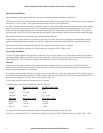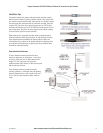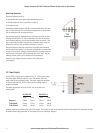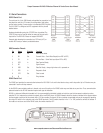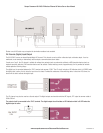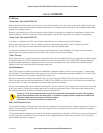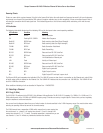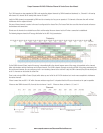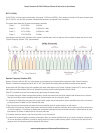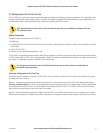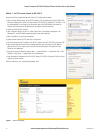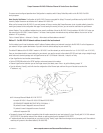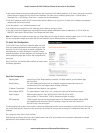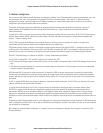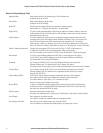
20
www.cooperbussmann.com/BussmannWirelessResources
Cooper Bussmann BU-245U-E Wireless Ethernet & Device Server User Manual
802.11a (5GHz)
The BU-245U-E-A utilizes frequency bands within the range of 5.15GHz and 5.825GHz. This is broken into 4 distinct U-NII bands and each region
(EU, US, AUS, NZ, etc) have their own power and operational constraints, see Appendix C for more details.
The example below shows the US power and operational constraints
“Group 1”: 5.15-5.25GHz @ 50mW
“Group 2”: 5.25-5.35GHz @ 250mW to 1 Watt
“Group 3”: 5.47-5.725GHz @ 250mW to 1 Watt
“Group 4”: 5.725-5.825GHz @ 1Watt
Each frequency band has certain limitations on the amount of radiated power that it can output as well as whether the band uses what is called
“Dynamic Frequency Selection” (DFS), explained below.
Dynamic Frequency Selection (DFS)
Because of the push within the 802.11a market to open up new spectrum for unlicensed radio a mechanism called “Dynamic Frequency
Selection” needed to be developed so that the 802.11 Wi-Fi could coexist with existing military and telecommunication radar systems.
Access points with 5GHz radios comply with regulations that require radio devices to use Dynamic Frequency Selection (DFS), which can detect
radar signals and avoid interfering with them by automatically scanning and then selecting another channel or band.
When DFS is enabled, the Access Point (master device) goes through the following steps:
1. The master device that initiates communications selects a channel and monitors that channel for potential radar interference for a minimum
listening time of 60sec (channel availability check time). No transmissions can occur during this period.
2. If interference is detected then the system has to go and select another channel and repeat the channel availability check on the new channel
(the original channel is added to a list of channels with radar).
3. Once a channel has been selected and passes the channel availability check the network starts to use that channel.
4. While using the channel the network’s master device continuously monitors for potential interference from a radar source (this is referred to as
“in-service monitoring”). If interference is detected then the network master device issues commands to all other in-network devices to cease
transmissions. The channel is added to the list of channels with radar.
5. The master device then selects a new channel (one that is not on the radar list).
6. A channel that has been flagged as containing a radar signal, either by a channel availability check or by in-service monitoring, is subject to a
30 min non-occupancy period where it cannot be used by the device in order to protect scanning radars. The channel on the radar list will be
purged once the non-occupancy period has elapsed for that channel.
3A1576Rev1.6



